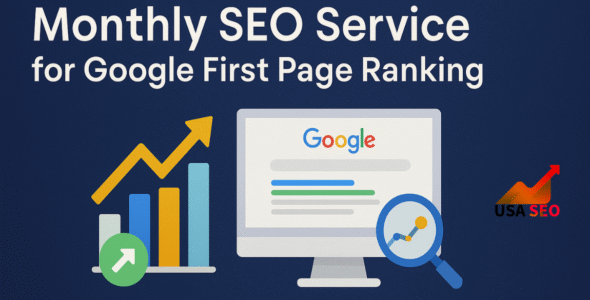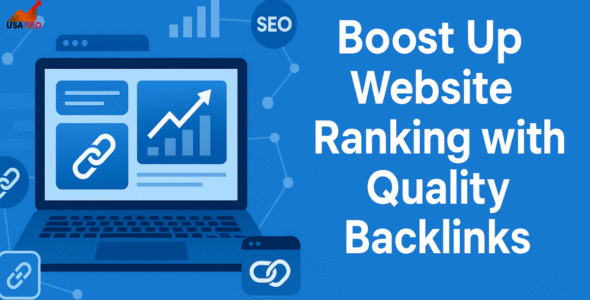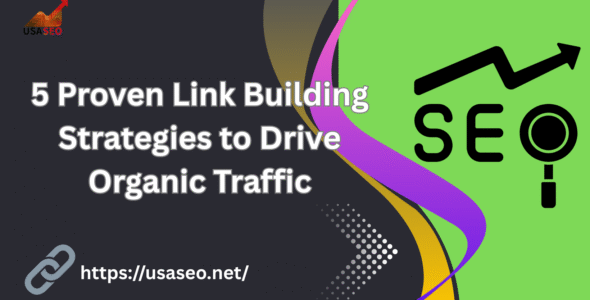Digital marketing vs traditional marketing is an ongoing debate that has been raging for years. It’s a difficult question to answer, as both have their advantages and disadvantages. Digital marketing offers broad reach but can be challenging to measure, with potentially high associated costs. Traditional marketing is generally more cost-effective, but it may be restricted in terms of reach and innovation. In this blog, we’ll explore both sides to help you decide which option is best for your company.
The Rise of Digital Marketing
The emergence of digital marketing has been nothing short of revolutionary in the realm of advertising and promotion. With the tremendous improvements in technology, the way companies engage with their consumers has changed drastically. Digital marketing refers to the use of numerous internet platforms and channels to advertise items or services. It includes various methods like social media marketing, SEO, content marketing, email marketing, and more to drive results.
The rise of digital marketing is driven by increased reliance on the internet and mobile devices in daily life. People are spending more time online than ever before, whether it’s perusing social media, seeking information, or making online purchases. This change in consumer behavior has provided a huge canvas for firms to interact with their target audience. Another element contributing to the popularity of digital marketing is its capacity to give real-time data and analytics. With digital marketing, organizations can evaluate the efficacy of their initiatives, measure critical KPIs, and make data-driven choices.
This degree of knowledge and accuracy is unequaled in conventional marketing tactics, where it may be tough to quantify the performance and impact of campaigns correctly. Furthermore, digital marketing allows a greater degree of personalization and targeting. Businesses may segment their audience and develop tailored messaging based on certain demographics, hobbies, or habits. This degree of personalization may lead to increased engagement and conversion rates, as consumers believe that the information is personalized to their requirements and interests.
Overall, the growth of digital marketing has opened up a world of potential for firms of all sizes. It has leveled the playing field, enabling small enterprises to compete with big corporations. The capacity to reach a worldwide audience, monitor campaign performance, and offer tailored experiences has made digital marketing a vital tool in the current corporate environment.

Understanding Traditional Marketing
Traditional marketing refers to the tried-and-true tactics that firms have been utilizing for decades to sell their goods or services. It involves advertising via newspapers, television, radio, billboards, direct mail, and more. In the realm of conventional marketing, firms generally depend on established channels to reach their target audience. This might involve putting advertising in newspapers or periodicals that are related to their sector or broadcasting adverts during popular TV programs. Traditional marketing strategies are frequently recognizable and trusted by customers since they have been utilized for years. One benefit of traditional marketing is its ability to reach a local audience efficiently.
If a firm predominantly works in a particular geographical region, conventional marketing strategies such as distributing leaflets or advertising on local radio stations may be very successful in reaching prospective clients. Traditional marketing also provides tangible ads that buyers can physically handle and engage with. For example, direct mail campaigns enable firms to deliver promotional information, discounts, or catalogs straight to the customer’s mailbox. This tangible link may assist in generating a better impression and make it more probable for consumers to remember and interact with the brand.
However, one of the biggest limitations of conventional marketing is the lack of exact targeting. Traditional marketing tactics generally depend on casting a broad net and hope to grab the attention of the proper audience. This might lead to a greater amount of waste, since advertising may reach persons who have no interest or need for the product or service being offered. Traditional marketing approaches are also often more costly compared to digital marketing. The expenses connected with printing and delivering physical ads may rapidly build up. Additionally, it may be difficult to evaluate the performance of conventional marketing programs and quantify their return on investment (ROI). Despite these obstacles, conventional marketing still keeps its position in the marketing industry. It may be particularly helpful for firms targeting an older clientele who may be less engaged online or prefer more conventional forms of media.
Advantages and Disadvantages of Traditional Marketing
Traditional marketing strategies have been around for decades and have shown to be successful in many ways. One of the benefits of conventional marketing is its capacity to reach a large audience. Television commercials, radio ads, and billboards have the ability to reach a large number of people, making it simpler for companies to boost brand recognition and attract new consumers. Traditional marketing approaches also offer a degree of familiarity and trust that digital marketing may not always have. People have grown up with newspaper advertisements, TV commercials, and direct mail campaigns, therefore they are more inclined to pay attention to these types of advertising. Additionally, tangible marketing such as brochures or catalogs may generate a better impression and make it simpler for buyers to remember and connect with a company.
However, there are also certain downsides to conventional marketing. One of the biggest problems is the lack of precision targeting. Traditional marketing approaches frequently throw a broad net, seeking to grab the attention of the ideal demographic. This might lead to a greater amount of waste, since advertising may reach persons who have no interest or need for the product or service being offered. Another problem of conventional marketing is the high expense connected with it. Producing and delivering physical ads may rapidly add cost, particularly for firms with restricted resources. Additionally, it may be tough to analyze the performance of conventional marketing programs and quantify their return on investment (ROI).
Overall, traditional marketing tactics have their pros and disadvantages. They may reach a large audience and have a degree of familiarity, but they may lack specific targeting and can be pricey. It is crucial for firms to thoroughly evaluate their target demographic and budget when determining which marketing tactics to deploy.

Advantages and Disadvantages of Digital Marketing
Digital marketing has various benefits that make it a very successful approach for firms. One of the primary advantages is the potential to reach a broader audience. With digital marketing, firms can tap into a worldwide market and engage with prospective clients from all over the globe. This vast reach may dramatically enhance brand exposure and possible consumer acquisition. Another benefit of digital marketing is its cost-effectiveness. Compared to conventional marketing tactics, digital marketing initiatives may be conducted at a fraction of the expense.
Platforms such as social media, email marketing, and content marketing enable firms to reach their target audience without breaking the bank. Additionally, digital marketing delivers unrivaled measurability and data analysis. With numerous analytics tools, companies can monitor the progress of their efforts in real time. Metrics like as website traffic, conversion rates, and engagement levels may give useful information that assists in improving marketing campaigns for better outcomes.
Moreover, digital marketing provides exact targeting and customization. Businesses may segment their audience based on demographics, hobbies, and behavior to offer highly personalized information. This degree of customization enhances engagement and conversion rates, as consumers feel that the company understands and responds to their requirements. However, internet marketing does come with its own set of downsides. One difficulty is the continuously developing digital scene. With new platforms and technologies appearing all the time, companies need to keep up-to-date and modify their strategy appropriately. Additionally, the digital arena may be busy and competitive, making it tough to distinguish from the competitors. Furthermore, digital marketing takes a high degree of technological skill. Businesses need to grasp numerous internet platforms and marketing methods to properly execute digital campaigns. This may necessitate investing in training or employing individuals that specialize in digital marketing.
The Evolution of the Customer Journey
Over the years, the customer journey has experienced a tremendous transformation, owing to the improvements in digital marketing. Gone are the days when people depended entirely on conventional advertising strategies to locate and buy goods or services. Today, the customer journey is strongly affected by digital channels, making it vital for organizations to adapt and embrace this new terrain. The customer journey now starts with the first awareness stage, when people become aware of a brand or product via numerous digital touchpoints such as social media, search engines, or online marketing.
With the capacity to customize messaging and target certain demographics, companies can now contact prospective consumers at the right place and at the right time. As clients proceed from the awareness stage to consideration and assessment, digital marketing plays a critical role in providing them with the information they need to make educated choices. Content marketing, customer evaluations, and social proof have become crucial in developing trust and credibility with consumers.
Once buyers have made their selection, the purchase step is also significantly impacted by digital marketing. E-commerce websites, online payment gateways, and user-friendly interfaces make it simpler than ever for consumers to complete their transactions online. Finally, the post-purchase stage has also undergone a revolution with the emergence of digital marketing. client feedback, internet reviews, and loyalty programs have become vital in fostering client relationships and driving repeat business. The development of the customer journey has brought about a transformation in the way organizations connect with their consumers. By recognizing and embracing this new terrain, organizations can successfully traverse the digital marketing world and develop meaningful experiences that connect with their target audience.

Integrating Digital and Traditional Marketing
Integrating Digital and Traditional Marketing may be a great approach for firms trying to increase their reach and impact. While digital marketing has gained popularity in recent years, conventional marketing still has its position in the marketing industry. Instead of picking one over the other, firms may harness the capabilities of both to build a full and well-rounded marketing approach. One method to merge digital and conventional marketing is through utilizing digital channels to boost traditional marketing efforts.
For example, companies may build online advertising that attracts people to their actual locations or events. By leveraging social media or search engine marketing, companies may target certain demographics and drive consumers to physical venues where they can experience the brand directly. Another idea is to employ conventional marketing strategies to complement digital initiatives. For instance, firms might utilize direct mail or print marketing to support their online content and enhance brand recognition. This may be especially helpful for addressing elderly groups who may be less engaged online.
Furthermore, firms may employ digital marketing to boost the measurability and monitoring of their conventional marketing operations. By adding unique URLs or QR codes on physical ads, companies can measure how many people visit their website or make a purchase as a consequence of the conventional marketing campaign. Integrating digital and traditional marketing may provide a smooth and complete client experience. By combining the wide reach and familiarity of conventional marketing with the accuracy and measurability of digital marketing, firms can magnify their message and boost their chances of success. So, instead of pitting digital versus conventional marketing, explore how you might mix the two for optimum effect and outcomes.
Which One to Choose?
When it comes to deciding between digital marketing and conventional marketing, there is no one-size-fits-all solution. The optimal method for your organization relies on numerous criteria such as your target demographic, budget, and marketing objectives.
Digital marketing has various benefits, including its capacity to reach a broader audience, its cost-effectiveness, and its precise targeting capabilities. With digital marketing, you can extend your reach internationally, interact with prospective consumers at the correct time and place, and analyze the performance of your campaigns in real-time. Additionally, the amount of personalization and customization that digital marketing provides may contribute to increased engagement and conversion rates.
On the other hand, conventional marketing has its virtues as well. It may be successful in addressing a local audience and has a degree of familiarity and trust that internet marketing may lack. Physical ads may generate a better impact and make it simpler for people to recall and connect with your business. Rather than picking one over the other, try merging digital and conventional marketing methods. By harnessing the capabilities of both, you can develop a complete and well-rounded marketing plan that optimizes your reach and effect.
Ultimately, the selection between digital marketing and conventional marketing should be based on your individual company’s demands and goals. It may be good to undertake market research, study your target audience, and evaluate your budget before making a choice. Remember, the most successful marketing approach is one that connects with your objectives and resonates with your target audience.
 My Account
My Account 


